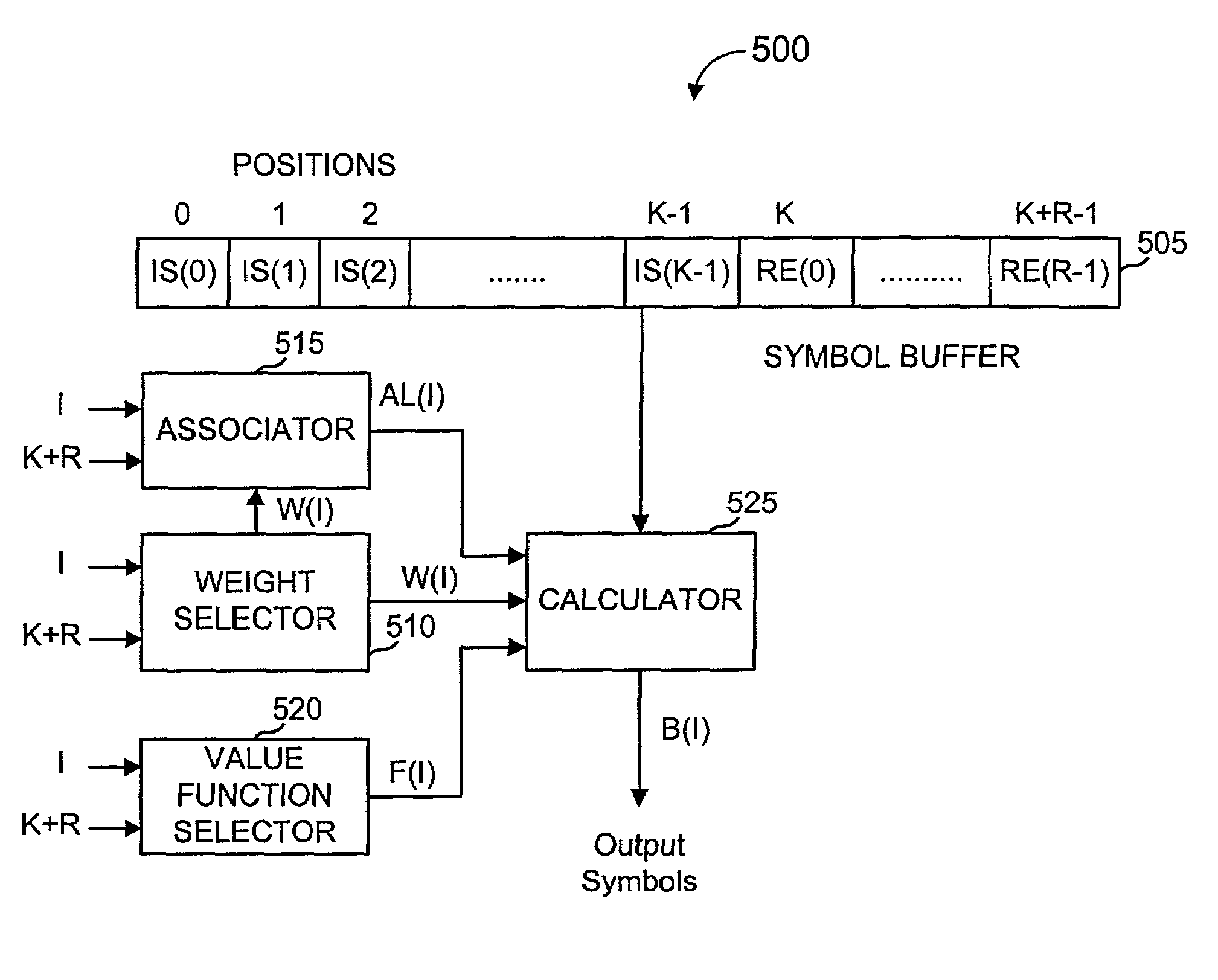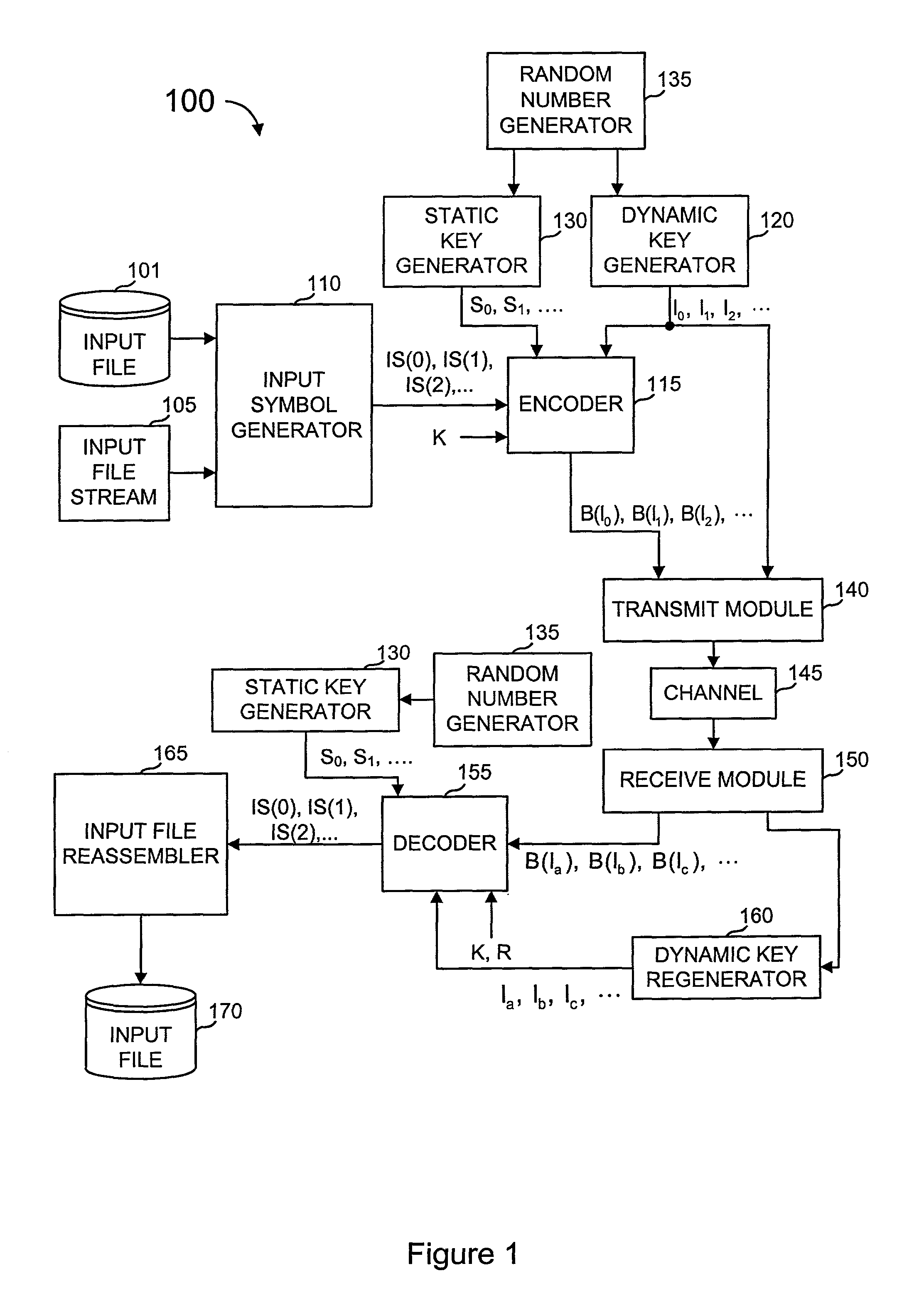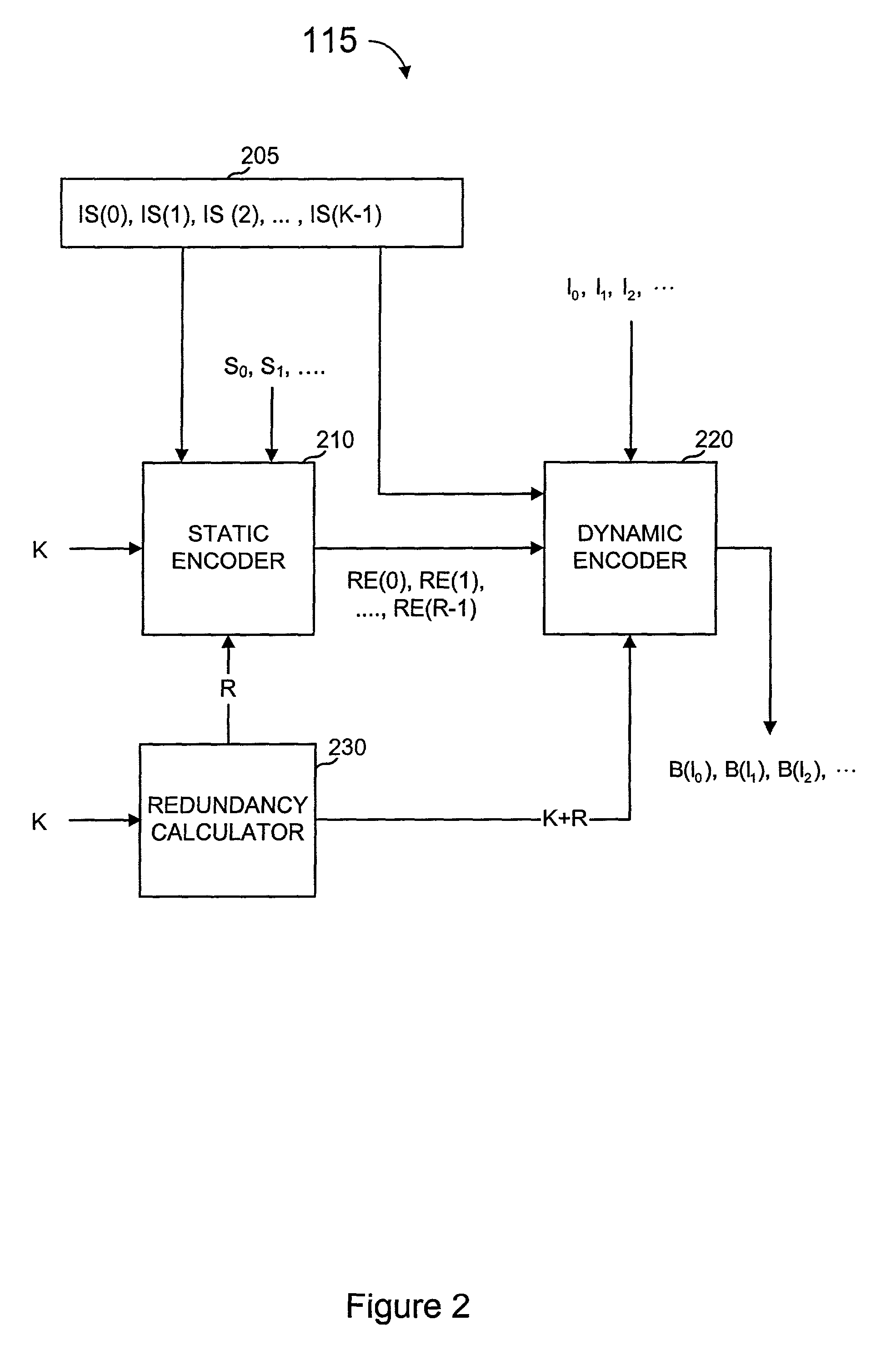Multi-stage code generator and decoder for communication systems
a communication system and code generator technology, applied in the field of encoding and decoding data in communications systems, can solve the problems of inefficiency, often occurring packet loss, and inability to meet the needs of one-to-many or many-to-many communications, and achieve the effects of reducing the number of codes, reducing the number of code generators, and improving the quality of cod
- Summary
- Abstract
- Description
- Claims
- Application Information
AI Technical Summary
Benefits of technology
Problems solved by technology
Method used
Image
Examples
Embodiment Construction
[0046]The present disclosure references U.S. Pat. No. 6,307,487 (Luby I), and U.S. Pat. No. 6,320,520 issued to Michael G. Luby entitled “Information Additive Group Code Generator and Decoder for Communication Systems” (hereinafter “Luby II”), the entire disclosures of which are herein incorporated by reference for all purposes. Luby I and Luby II provide teachings of systems and methods that can be employed in certain embodiments according to the present invention. It is to be understood, however, that these systems and methods are not required of the present invention, and many other variations, modifications, or alternatives can also be used.
[0047]In the specific embodiments described herein, a coding scheme denoted as “multi-stage coding” is described, preceded by an explanation of the meaning and scope of various terms used in this description.
[0048]Multi-stage encoding, as described herein, encodes the data in a plurality of stages. Typically, but not always, a first stage add...
PUM
 Login to View More
Login to View More Abstract
Description
Claims
Application Information
 Login to View More
Login to View More - R&D
- Intellectual Property
- Life Sciences
- Materials
- Tech Scout
- Unparalleled Data Quality
- Higher Quality Content
- 60% Fewer Hallucinations
Browse by: Latest US Patents, China's latest patents, Technical Efficacy Thesaurus, Application Domain, Technology Topic, Popular Technical Reports.
© 2025 PatSnap. All rights reserved.Legal|Privacy policy|Modern Slavery Act Transparency Statement|Sitemap|About US| Contact US: help@patsnap.com



